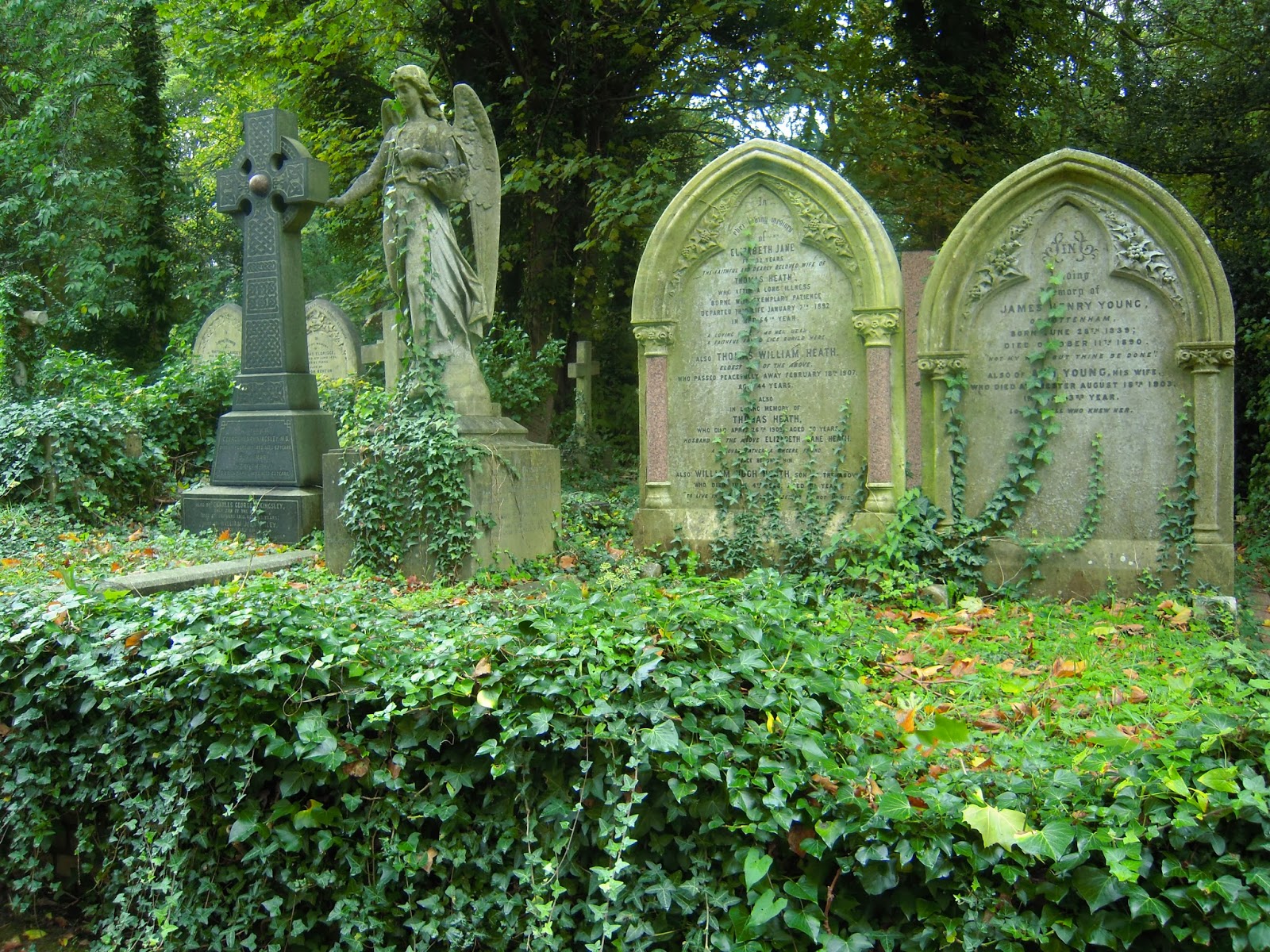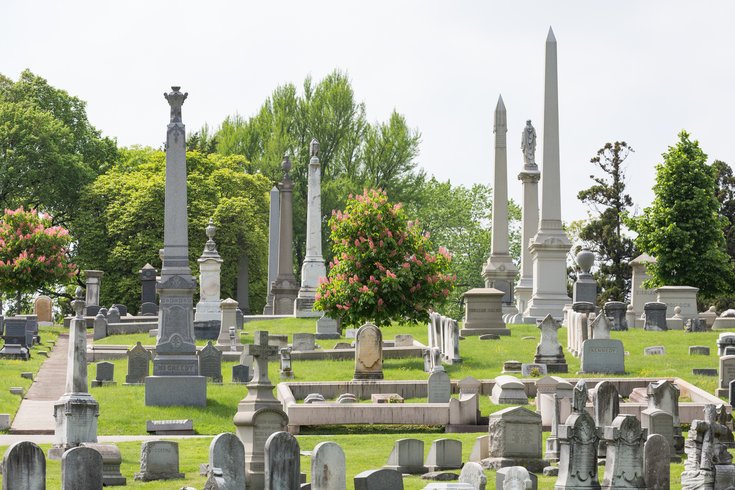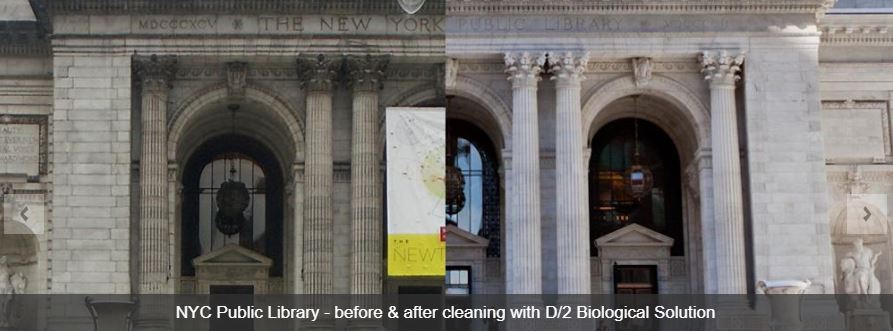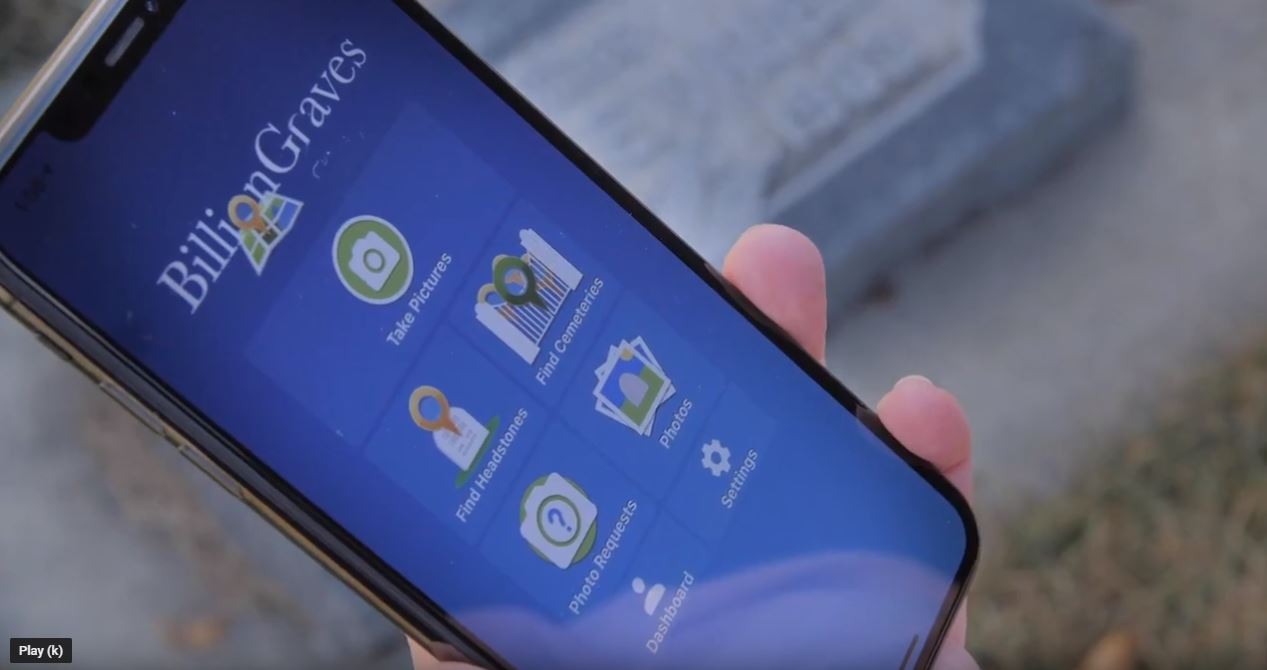This is a re-print from Billion Graves Blog and is NOT a product endorsement... For educational purpose and preservation ONLY!
Gravestone cleaning can turn back the wheels of time to make your ancestor’s final resting place nearly as beautiful as the day their family members gathered there to wish them farewell.
Time has been hard on gravestones that were originally considered nearly permanent. Weathering, erosion, neglect, and vandalism have all taken their toll.
While some of this damage cannot be reversed, in other cases, preservation and prevention can make all the difference. And as more people become interested in genealogical research, there is a greater desire to preserve what is left of our ancestor’s legacies in stone.
By cleaning and caring for historic resting places you can provide an opportunity for future generations to glimpse the past. Then burial grounds will become treasures of information that would otherwise have been forgotten or lost.

Photo Credit
BillionGraves and Save Your Stones
BillionGraves has partnered with the gravestone preservation company Save Your Stones to provide you with the best guidelines and tools for cleaning your family headstones.
The owner of Save Your Stones, Jarrod Roll, is a professional museum curator in Sparta, Wisconsin. Roll was trained during graduate school to clean stone, so it was a natural step for him to begin a gravestone preservation business.
Save Your Stones now brings its 13 years of gravestone cleaning expertise to BillionGraves. You will benefit by being able to not only clean your ancestor’s headstones with a BillionGraves Gravestone Cleaning Kit but also take photos with the free BillionGraves app. The gravestones will not only shine again, but they will have a GPS-linked image posted on BillionGraves.com for your family members to enjoy for generations to come.


Why Should You Clean a Gravestone?
First of all, it is important to decide if a headstone really needs to be cleaned.
There are two main reasons to clean a gravestone. First, it may need to be cleaned to preserve its structural integrity. For example, plant roots can creep into the stone and cause cracking that may split the stone. Lichen can eat away at the surface causing it to crumble.
And second, plant growth or darkening can obscure names, dates, and other data. Correct and careful cleaning procedures, as used by professional conservationists, can keep the stone readable and prevent future deterioration.
When Should You NOT Clean a Gravestone?
Before moving on to how to clean a gravestone, it is important to determine if the gravestone should be cleaned at all. Sometimes cleaning is done needlessly. For instance, it can be easy to mistake the natural patina of aging for dirt. Marble headstones will not look as white as the day they were set because the nature of marble is to change color as it is exposed to the elements. It may be best to leave those stones alone.
Next, consider the effect that cleaning solutions and methods will have on the stone. Then weigh the benefits against the potential risk of possibly damaging the surface. Cleaning may only make damage worse if the gravestone is already flaking or peeling. Finally, assess the stability of the monument. Sometimes after careful consideration, it may be best to decide to leave the gravestone in its current state.
Please avoid cleaning the headstone just to honor the memory of your loved one. Only clean it if it is really needed. Bless your heart for wanting to do it, but let’s find other ways to keep their memory alive!

Photo Credit
Sources of Gravestone Damage
There are several reasons you will want to consider gravestone cleaning though. Cleaning can be so important to prevent decay to the stone. Damage is caused to gravestones by . . .
- Biological growth
- Soiling
- Staining
Understand Laws and Regulations
BillionGraves subscriber, Doug McCallum, the son of a cemetery commissioner, said, “It is critical to know the local ordinances. In some places, cleaning any stone, no matter how safe the product, would be considered vandalism and subject you to large fines. It is 100% important to ask permission before doing any modification to a stone.”
McCallum’s father noted that some Revolutionary War monuments in the northeastern United States were being damaged by well-intentioned people.
So please, use common sense in considering the condition of a gravestone. Be careful, seek permission, and check online for any pertinent cemetery, city, county, state, or federal ordinances pertaining to the area where you wish to clean a gravestone.
Source of Gravestone Damage #1: Biological Growth

Biological growth in the cemetery is just what it sounds like – living things growing on the gravestones such as moss, lichen, algae, fungi, mold, and other plant life. And while a headstone covered with ivy or fringed with moss and lichen may give a sense of antiquity and nostalgia to the cemetery, it is also extremely damaging. If left untreated, biological growth can cause headstones to crack, crumble, and split over time.
Algae, fungi, and lichen
Algae, fungi, and lichen may be green, gray, black, red, orange, yellow, blue, or brown. These organisms can damage headstones by trapping moisture on the stone and beneath the surface of the stone. Then as temperatures change, the moisture freezes and thaws. Consequently, thermal expansion and contraction cause cracking and flaking.
The trapped moisture also continues to foster the growth of additional algae, fungi, and lichen, which extend into the pores of the stone. Then as the moisture levels fluctuate, the “roots” or hyphae of these living organisms swell and shrink causing cracking, peeling, and flaking to occur.

Plants
Plants, like grass, ivy, moss, and ferns that grow on or under gravestones can be damaging because their roots penetrate the stone and cause splitting. And like algae, fungi, and lichen, they also trap moisture.
If you’ve ever seen a dandelion or a blade of grass poking up through a cement driveway or causing a sidewalk to heave, you understand the power of tiny plant roots.
Acids
Plants, lichen, moss, algae and other natural growths can contain acid. Acidic substances can be damaging to some types of stone and it can become more severe over time.
For example, marble is composed primarily of calcium carbonate. Lichen secretes an acid that can dissolve the calcite. This can cause a loss of carving details, erosion to the surface, and even damage the structural integrity of the headstone.
Source of Gravestone Damage #2: Soiling

Photo Credit
Flat grave markers are particularly susceptible to damage from dirt, soil, and mud. Dirt that penetrates into the pores of the stone can cause a dingy appearance. It can also lead to staining. For example, minerals in the soil, such as iron, can leach into the headstone and cause rust-colored stains.
If a headstone sinks into the ground over time and is later raised and reset, an obvious line of soiling can be visible. Soil can also retain moisture after snow and rainfall, leading to the growth of mildew and mold.
Even upright headstones can be damaged and eroded by airborne dirt in windstorms. This is a particular concern in deserts where cemetery ground is frequently left bare.
For cemeteries located near factories or in large cities with lots of traffic, air pollution can be a problem. Pollutants can interact with the stone, changing the appearance and etching the surface.
The National Center for Preservation Training and Technology (NCPTT) states that “sulfur dioxide produced through manufacturing processes and vehicle exhaust can interact with marble surfaces to cause gypsum crusts. These crusts can capture soil and pollution particles to create rough, gray surfaces.”
Source of Gravestone Damage #3: Staining

Gravestones near trees or bushes are at risk for staining from two sources: sap and animals.
Overhanging tree branches and plants may drip sap onto gravestones. Sap contains resins which can be difficult to remove. Sugar in the sap can attract insects, which may lay eggs or burrow into the stone. The sap sugars also provide a source of food for mildew and mold. Bushes and shrubs sometimes have falling berries that can stain headstone surfaces.
Animal urine, feces, and bird droppings can leave gravestones with brown, yellow or white stains that become set into the pores of the stone. These stains may be difficult to remove, depending on the animal’s diet.
Headstone Cleaning Tips

DON’T
- Don’t do anything that will damage the surface of the headstone
- Don’t use common household cleaners
- Don’t use strong bases or acids
- Don’t use power tools, such as sanders or drills with wire brushes
- Don’t sandblast
- Don’t use power washers or pressure over 300 psi
- Don’t use bleach
- Don’t use cleaners with salt in them
- Don’t rub the gravestone surface with hard-bristled brushes
- Don’t scrape the gravestone surface with anything harder than the stone

DO
- Do no harm!
- Choose the gentlest cleaning method possible
- Do read and follow product manufacturer’s guidelines
- Do use good safety practices
- Do test small areas before cleaning the entire headstone
- Do keep the stone wet as you work
- Do obtain the approval of other family members before cleaning
Gravestone Cleaning Supplies

- Water
- Water mister, spray bottle, bucket, or hose
- Soft plastic scraper
- Soft bristle brushes
- Wooden pick
- D/2 Biological Solution
- Safety glasses (optional)
- Gloves (optional)
Water

First and most important is water. Water will not damage the stone and should be used first to gently wash away dirt, soil, and dried grass clippings. Before you use chemical cleaners, wet the surface of the stone. Then as you are working, continually keep rewetting the stone to avoid letting the cleaner dry on the surface.
Water will keep the gravestone from getting damaged as you clean, so it is essential to either locate a source of water at the cemetery or bring water with you. If the cemetery has a water source you can use, bring a bucket or jug to transport it.
If you have traveled from out of town to clean your ancestor’s gravestone, you could purchase a gallon of distilled water to take with you to the cemetery.
Plastic scraper

Photo Credit
Use a soft plastic scraper to gently remove biological overgrowth, such as moss or lichen. Scrapers should be softer than the stone itself and may be made of pliable plastic or silicone.
Brushes

When it comes to using brushes for gravestone cleaning, think of the surface as being like the enamel on your teeth. The bristles need to be soft enough to do no damage but firm enough to get the job done.
The brush may be made of natural fibers or soft nylon. With any brush you use, run your fingers over the bristles, checking for gentle pliability. If there are any metal or rough edges, they should be covered with duct tape to avoid accidentally scratching the stone.
Wooden Pick
A wooden pick can be useful to remove lichen or algae, especially if it is growing in indentations or etched lettering.

D/2 Biological Solution
Cleaners used on gravestones should be the gentlest possible choice to get the job done. D/2 is a gentle biocide and very effective for headstones covered in biological growth – lichen, moss, fungi, algae, and plants.
D/2 Biological Solution was designed by conservators for conservators. It was successfully tested in a 6-year study. Finally, it was recognized as the official cleaner of the Department of Veteran Affairs National Cemetery Administration and specified to be used on U.S. military gravestones.

Historic Monuments Cleaned with D/2
Conservationists have used D/2 to clean millions of historic buildings and monuments as well as for gravestone cleaning. Here are some of the historic places that have been cleaned and restored using a D/2 biocide:
- Gravestones at Arlington Cemetery
- The White House
- The New York City Public Library
- The Washington Monument
- The state of Washington capitol
- The Biltmore Estate (the largest private home in America)
- Burial Hill (one of the oldest cemeteries in America)
- Frank Lloyd Wright’s Taliesin estate
- Chicago’s Museum of Science and Industry
- The Alamo
There are many more, but that is enough to give you the idea . . . this is a respected, well-researched product that has been used on some of the finest buildings and monuments in the world.

Using D/2
If there is landscaping near the gravestone you plan to clean, spray them with water before starting. Wetting flowers, grass, and foliage first will help protect them from overspray.
Safety
D/2 is non-toxic but may irritate eyes and skin. Safety glasses and gloves are an optional precaution. Masks may be worn if there is a danger of overspray on windy days. Always read the label on the cleaning product you are using and follow the manufacturer’s guidelines.
Methods for Gravestone Cleaning
Using the proper cleaning methods will protect the stone and protect you.
Gravestone Test Spot
Before spraying the entire stone with a chemical cleaner, it is a good idea to do a small test spot in an inconspicuous area to ensure you won’t be damaging the stone. If you wish, use painter’s tape to mark off a small square near the base or back of the gravestone. Spray the area inside the taped off section with water and then follow with D/2. Gently brush the sprayed square with a soft brush to test the results.

Soak with Water
When you are ready to clean the headstone, wet the entire surface with water. If you don’t have an easy source of water at the cemetery purchase gallons of distilled water or fill water jugs to bring with you from home.
Large spray misters are helpful for large monuments and small hand spray bottles of water are fine for small stones.
Stone is very porous and absorbent. So spraying with water liberally will keep the cleaner on the surface and out of the pores to reduce the effects of the cleaner.

Photo by Save Your Stones
Cleaning the Gravestone
Start cleaning from the bottom of the stone and work your way up. This will minimize the effects of streaking if the cleaner runs down the surface.
Scrape off any large clumps of biological growth with a plastic or wood scraper. Rinse.
Spray the cleaner generously over the surface of the stone in an area that can be easily worked before it dries out. Then allow the biocide to sit on the stone for about 10-15 minutes. Next, gently scour the stone in small circular motions with a soft brush. Work the cleaner into the crevices and lettering.
It is better to scrub gently several times over the same area than to try to scrub too hard on the first attempt. Watch carefully for any damage to the stone your pressure may cause and if you see flaking, stop and reassess your methods.

Work in Sections
Spray D/2 Biological Solution generously on the gravestone. Allow to sit for about 5 minutes. Remember, if you are cleaning a large monument work in sections. Keep the gravestone wet as you work by continually spraying it with D/2.
It is helpful to use varying brush sizes for different areas of the tombstone. Use a wooden pick to remove debris and growth from etched lettering and detailed carvings.
Repeat these steps as needed to remove persistent stains and growth.
Finally, rinse the stone when you are done cleaning, striving to leave no visible cleaner on the surface.

D/2 Cleans and Keeps on Cleaning
You may be pleasantly surprised to learn that even after you have cleaned a gravestone with D/2 Biological Cleaner it will continue to clean the headstone on its own for the next few weeks to months -without you having to anything else.
As the cleaner seeps into the pores of the stone it will kill more biological growth. And you will be able to see a noticeable lightening of the stone during this time.
Photograph with the BillionGraves App

Finally, take a photo of your newly cleaned gravestone using the free BillionGraves app on your smartphone. Go to your app store on your iPhone or Google Play Store for Android mobile apps to make taking photos of your ancestor’s gravestone easy.
In fact, it’s so easy that you can take about 250 photos per hour as a beginner. That means you could photograph ALL the gravestones in your ancestor’s cemetery!
The GPS location will automatically be linked to the image as you take the photo. The GPS coordinates are then posted on satellite maps, so others can also find their ancestor’s gravestones.
When you upload the image, you will be given the option to transcribe the data yourself or have another volunteer transcribe it.
The information will then be available online for families around the world for generations to come!
No comments:
Post a Comment